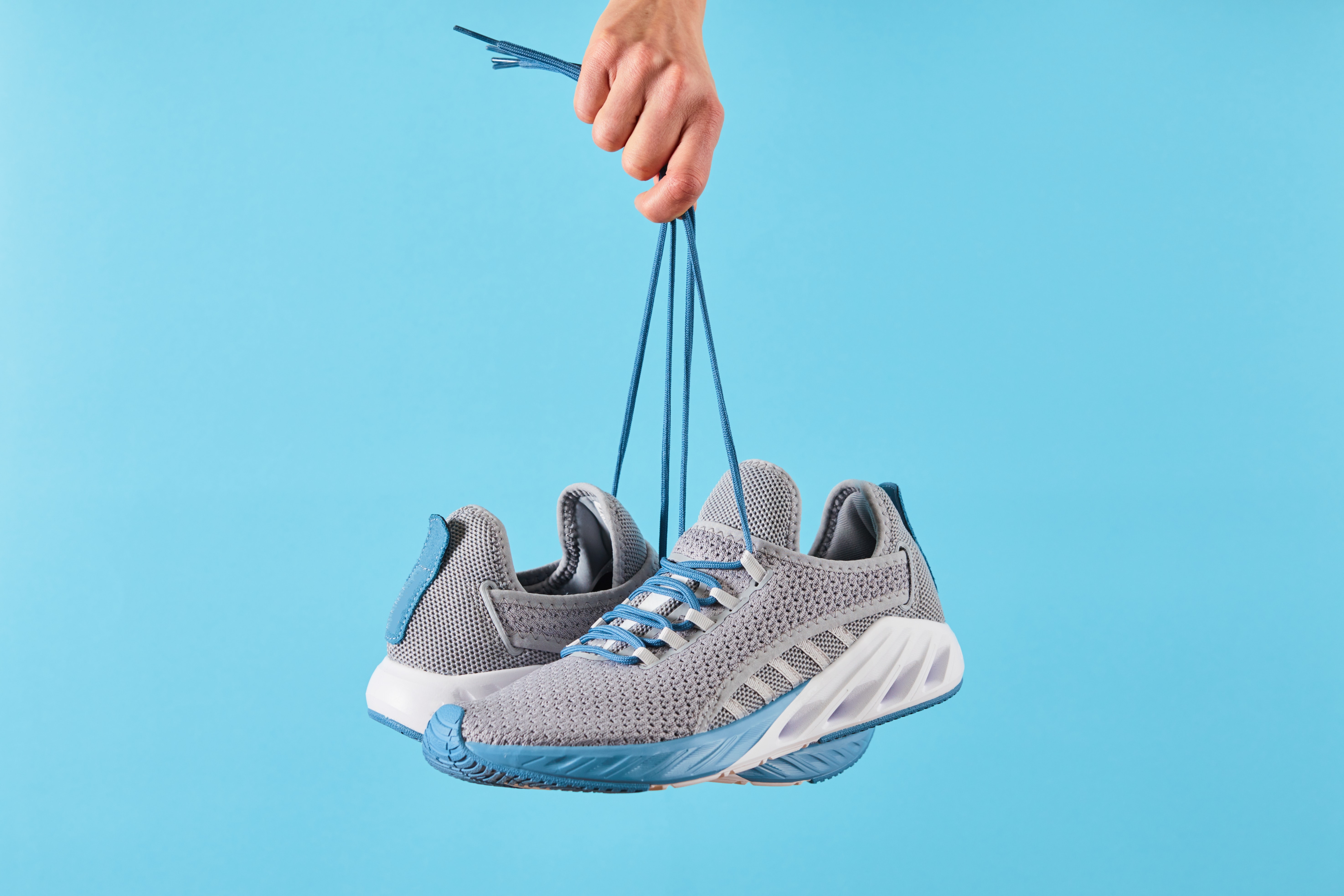
Choosing Running Shoes: Insights from a Physical Therapist
Which one is the best?
Choosing running shoes can be a daunting task. Much research, marketing, and thought has been put into creating and selling running shoes. Research has shown only one thing to be true about running footwear: the most comfortable shoe is often the best one for the runner. Beyond that, there is no conclusive evidence about the effectiveness of footwear in injury prevention.
But my toenail keeps falling off!!
A common misconception is that all footwear must fit the same. A running shoe’s intended use is not the same as a soccer cleat, climbing shoe, or fashionable heel. When choosing a running shoe, keep in mind that the foot receives between 200% and 300% of the body’s weight with each step.
The foot needs room to “splat and splay.” Be sure that you have about a thumb’s width of room in front of your longest toe to allow for this. The other expectation is that a shoe will break in. It is common for your running shoes to be ½ -1 size larger than your day-to-day shoes. There is no break-in period for a running shoe. If the shoe does not feel good out of the box, it never will.
When choosing running shoes one of the most important things to remember with a running shoe is comfort. Even with all the miles and research put into running shoes, one of the best indicators of running in the “right

shoe,” is overall comfort. A study performed with 206 military personnel found that choosing the most comfortable insert for their footwear during training had up to a 53% reduction in injury rate. This study does not necessarily mean you should have an insert in your shoe. This study suggests that the shoe's comfort is a good predictor of that shoe’s ability to work with your body.
Another common misconception is that a “good supportive shoe” has a pronounced arch. This is often more a feature of fit than support. It is important that when purchasing a shoe, it is comfortable. The shoe should not feel as though it is forcing your foot to do something other than what it does naturally.
What does a “good supportive shoe” really mean?
Training shoes are most often broken into three to four different categories: Neutral or cushioning, (occasionally) guidance, support, and motion control. Footwear placed in these categories are all created with different amounts of support and dampening. The way to determine the level of support present in a shoe is its torsional stiffness. If you take a shoe and twist it, the more rigid it is, the more supportive it will be when running.
How much support does one need? This can be directed, but not always determined, by measuring one’s foot with a Brannock device. A Brannock device is the foot measuring tool in almost every shoe store. Using the Brannock properly is to measure sitting followed by standing, including arch length. The greater the change from sitting to standing, the more supportive the shoe one should try on.
As a general guideline, a person with less than ½ size change in length from sitting to standing will do well in a neutral shoe. If the change is between ½ and 1, one will do well in a guidance or support shoe. One would do well in a motion-control shoe if there is more than one size change. These are not hard rules, but they are a good starting point. A running analysis can help to find a starting point for your running shoe search.
It’s like running on pillows!
In the past 20 years, the pendulum of running shoes has gone through a big swing. In the 2000s the trend shifted away from shoes that separated you from the ground to shoes that were intended to make you more connected to the ground. This was the barefoot running craze, a very popular book called “Born to Run” pushed it along and helped to change the footwear industry for a long time. While this was an interesting challenge to conventional wisdom, transitioning to less cushion and less support was not for everyone.
In the early 2010s, a brand named Hoka came onto the scene and began to push the cushioning pendulum in the opposite direction. Hoka targeted the growing ultra-marathon scene. This shoe had nearly double the foam of a traditional training shoe. As the barefoot, or minimalist, running trend began to fade, the maximalist running trend began to take hold. More and more shoe companies were building footwear designed to separate you from the ground. In 2024, if you go to a local 5k race, you would expect to see many people wearing these super cushioned shoes.

All this history begs the question, what is the right type of cushioning for me? The short answer is it truly depends on you and what you like. Many runners will say that for higher mileage one needs a more heavily cushioned shoe. Other runners may suggest that feeling more connected to the ground may help to make you a more efficient runner and prevent you from getting injured. Both are common opinions, however, neither of them are rules. Realistically the separation from the ground, for someone without an injury otherwise, is a personal preference. The most comfortable shoe is often the shoe best suited for your foot.
Which shoe is the best for me?
Choosing running shoes is best done in person. The best way to choose a shoe is to try them on. Every year, brands create new models and update existing models to gain customers. The best way to narrow the list of hundreds of shoes down is to put a few pairs on your feet. Many running shoe stores and even running brands will offer a trial period for running in a shoe. This allows you to try a pair of shoes before you truly commit.
